Today we have the seventh and final installment of Robert Lang‘s recent trip to Antarctica in a small boat, and there are videos as well as photos. Robert’s notes are indented, and you can enlarge the photos by clicking on them.
Antarctica Part 7: Other Wildlife
Birds—penguins and flyers—and mammals—pinnipeds and cetaceans—are the stars of the Antarctic, but there is plenty of other wildlife to be seen if one looks carefully. Underpinning the entire Antarctic ecosystem is the Antarctic krill (Euphausia superba), whose total biomass is estimated to be half a billion metric tons. While we often saw animals feeding on them in the open water, we could only infer their presence from the feeding behavior; they’re too small to see (from a shallow angle, that is—overhead imagery has captured vast swarms). But we did find one in a tidepool. They’re tiny: just a few cm long.
Even smaller, and lower-down on the food chain, are copepods (class Copepoda), seen here also in a tidepool along with some red algae (Phyllophora sp.). These are about the size of a grain of rice.
Copepods and krill both eat phytoplankton; krill also eat copepods. Another of their predators is the smooth comb jelly (phylum Ctenphora, order Beroidae). We saw this one swimming just below the surface near our Zodiac; the boat driver successfully maneuvered to let people on both sides of the boat see the comb jelly while avoiding the outboard motor turning it into comb marmalade.
The shoreline of the Peninsula and its islands tends to be pretty barren, as the rocks are regularly pounded by ice and waves, but we saw an Antarctic sea urchin (Sterechinus neumeyeri) tucked into a crevice just at the waterline.
In the bay of Deception Island (the volcanic caldera), we saw quite a few brittle stars (class Ophiuroidea) washed up dead. Since there were warm-water vents all along the shore, we wondered if it just got too hot for them.
On shore, there’s not much permanent life, but there’s plenty of residue of prior life, including quite a few relics of the whaling days—not just human relics, but also whale bones that were left behind. Here’s an old whaling boat with some whale vertebrae in the foreground.
There are only two vascular plants in Antarctica, but there’s quite a range of lichen to be found on the rocks. These are two from King George Island, one with cup-like stalks, and another bringing a splash of bright color to the normally gray landscape.
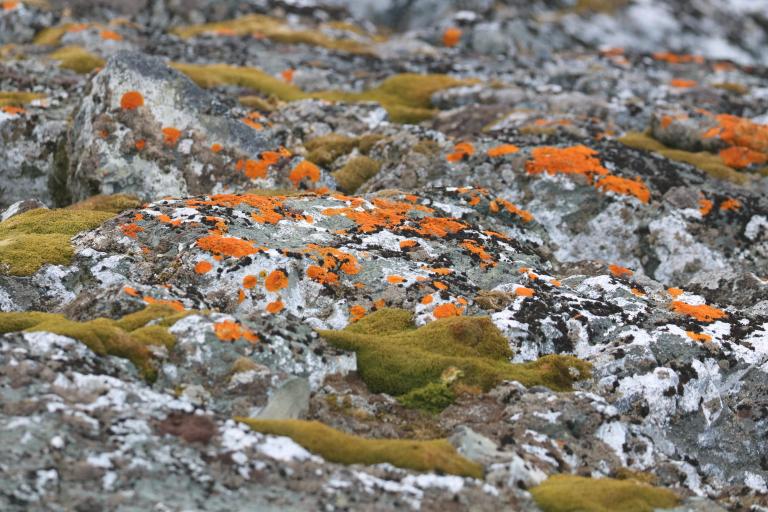
I’ll close with an image of the not-terribly-elusive Red Penguin; we saw several flocks over the course of two weeks, typically waddling along their age-old trackways after migrating there from their giant floating rookeries. We saw them at some remove several times, but kept our own respectful distance, not wanting to disrupt their natural behaviors.
And this brings our Antarctic journey to an end.

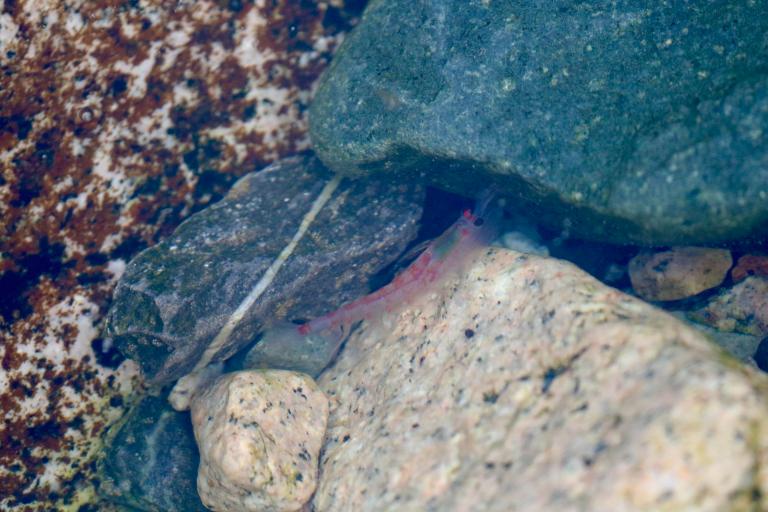
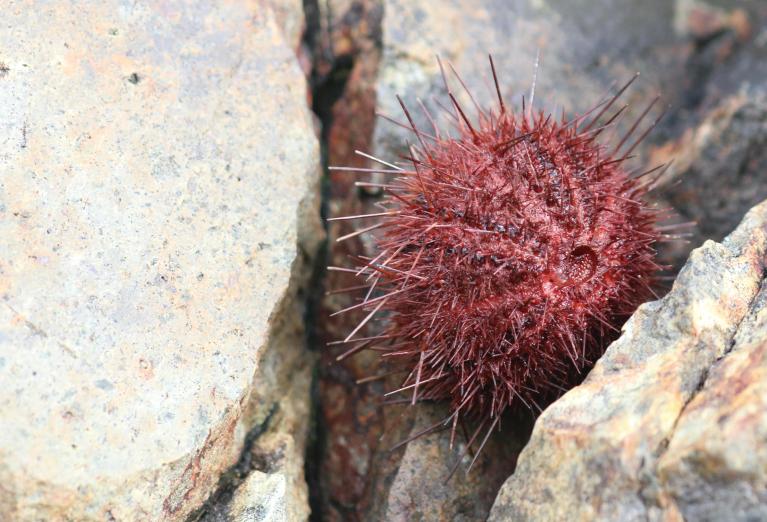
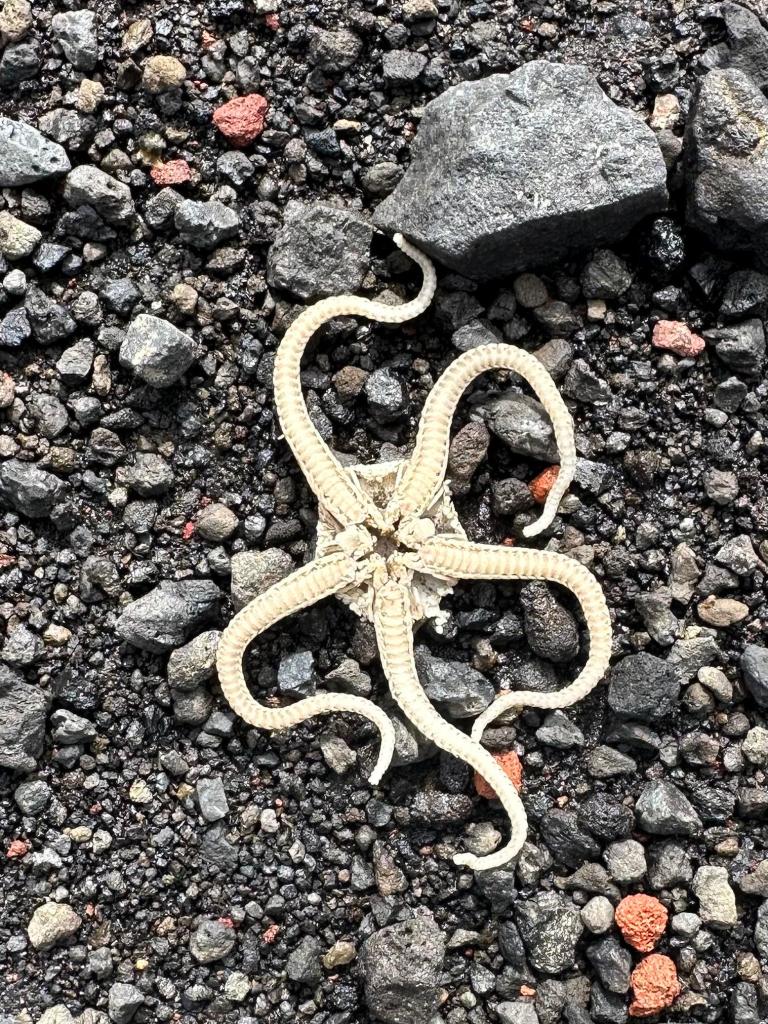

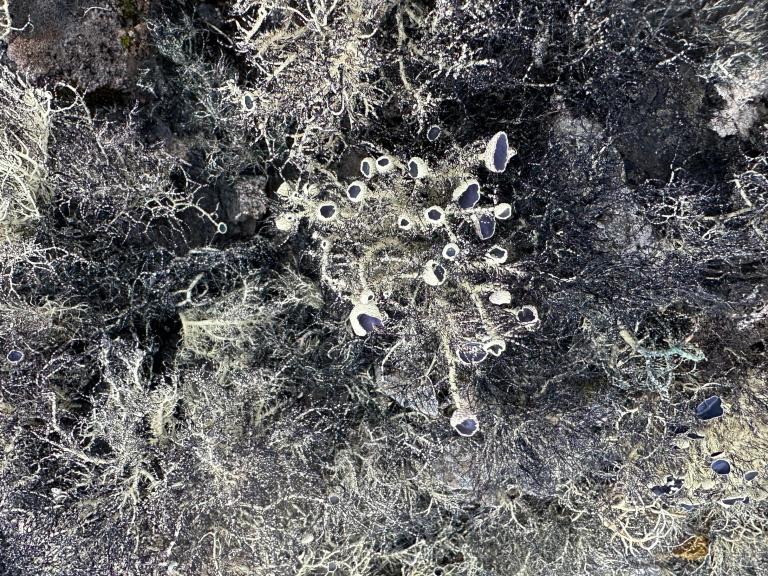
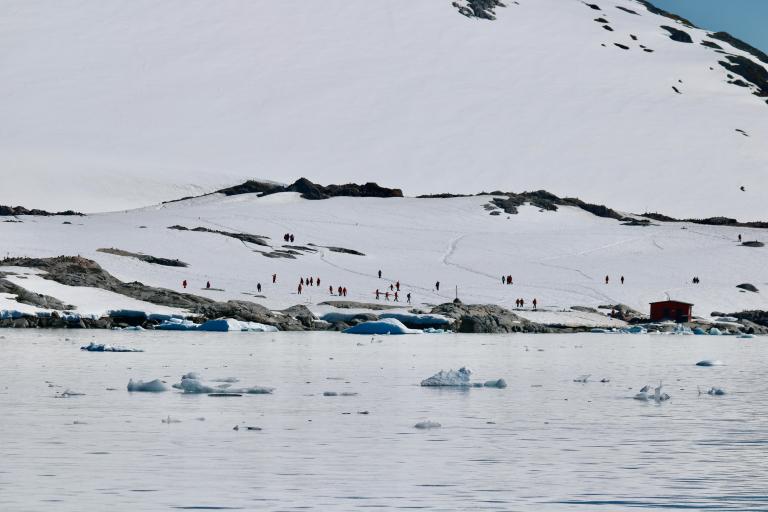
Wonderful – the comb jelly is amazing – I am amazed it can be observed as shown here –
Everyone must view this animal moving – the fibers move in waves that refract light to produce mesmerizing rainbow patterns. I saw some in an aquarium once (PCC(E), I sent you a video once a while back) – but there’s lots of youtube videos too.
Very nice!
I particularly liked the red penguins! So majestic! 😜
Glad to see the lowly invertebrates have a day in the sun. Nice pictures!
An amazing set! I don’t recall seeing many close up pictures I’ve seen of critters in the Antarctic.
Most interesting to me is seeing the “bones” of a relic whaling boat alongside actual whale bones. Is it poetic? Instructive? Ironic?
But I’m curious. Is it certain that it’s a whaling boat? What characteristics of the relic suggest that it’s a whaling boat and not from some kind of scientific expedition?
Thank you for sticking up for invertebrates, lichens, and other non-charismatic denizens of the lower reaches of the food web. They are at least as beautiful and important as the big critters.
What an enviable trip!
Thanks for the wonderful Antarctic journey. Whales, seals and penguins are the stars, but it was nice to see the smaller denizens (who happen to keep the ecosystem alive). Pretty urchin and lichens.
Thank you for this lovely series and the reminiscing it has provided for me. My own memorabilia from 1987 is in cardboard bound pieces of celluloid, so I don’t look at it often.